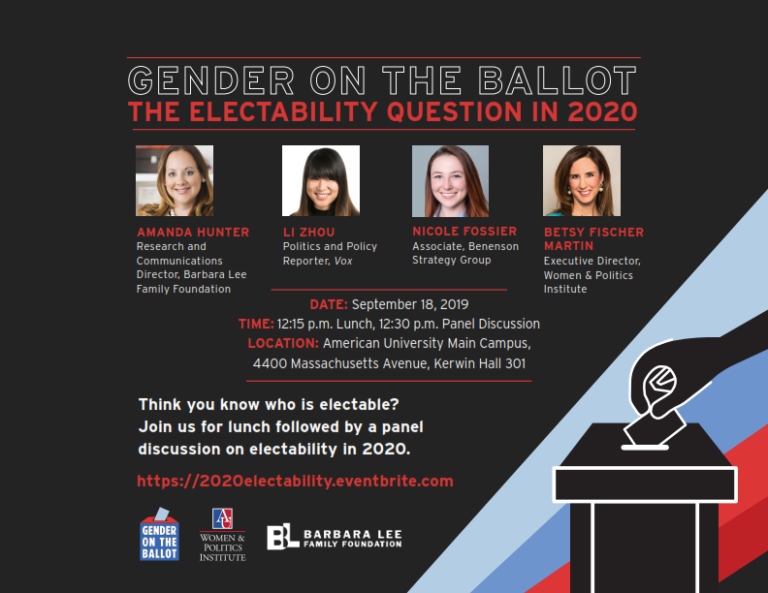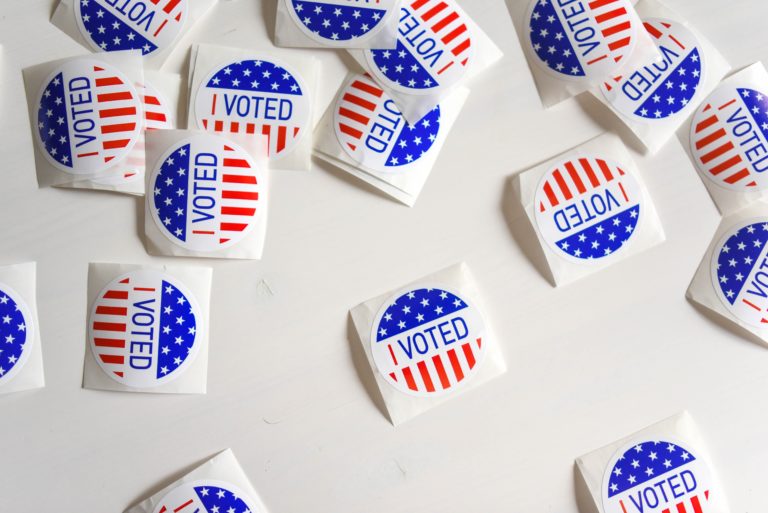Join us on September 18th, 2019 at American University or on Facebook Live for…
Likeability v. Electability: Different Word, Same Sexism

The influence of the #MeToo movement. The historic number of diverse women elected in 2018. The fact that multiple women have been on the last two presidential debate stages – and will be on the next one. All of these factors make the 2020 presidential race feel incredibly different from the 2016 one. But, you know what they say: the more things change, the more things stay the same. And one thing’s that definitely stayed the same: sexism. In 2016, we called it “likeability.” In 2020, we’re calling it “electability.”
This is not to say that men don’t get the electability question thrown at them. The problem is when electability is the word used to cover up prejudice, in any form. John F. Kennedy was seen as “unelectable” because he was Catholic. Barack Obama was seen as “unelectable” because he is African American. Six current nominees for president are seen as “unelectable” because they’re women.
The media’s current electability conversation is reminiscent of the likeability conversation of 2016 (questioning the likeability of women candidates is far from over, but there has been a substantial shift in the discussion). Donald Trump, Bernie Sanders, and Hillary Clinton were the major candidates of that cycle, and only Clinton had a “likeability problem.” No surprise – Barbara Lee Family Foundation research has consistently shown that women must show both qualifications and likeability to be elected; men only need to prove qualifications. Women also have to do more and be more than men to be considered likeable. While there is no silver-bullet solution for cracking the code of likeability – it’s not a one-size-fits-all concept and it’s important above all for candidates to remain authentic to themselves – there are some research-backed approaches that work especially well for women.
There is a key difference between showing likeability and electability: a woman candidate can show likeability at any time on the campaign trail. She can only show electability by… being elected. And because the last women nominated for president lost, the idea seems to be that the next woman candidate will also lose. This is a false equivalency that male candidates don’t have to deal with. For a man, past performance of a different man is not indicative of his future behavior because we don’t force men to represent their entire gender. Men have been losing presidential elections in the United States for over 200 years, but no one questions their electability.
Because we’ve had 45 male presidents, we have a gendered expectation of what a president looks like, but that has the potential to change. For 20 years, we’ve heard participants in our BLFF focus groups insist they’d vote for a woman, “just not that woman.” But in 2019, 8 in 10 voters reject the idea that the country isn’t ready to elect a female president. With six women currently running for president, it’s time for voters to remember that who is electable is up to them.






